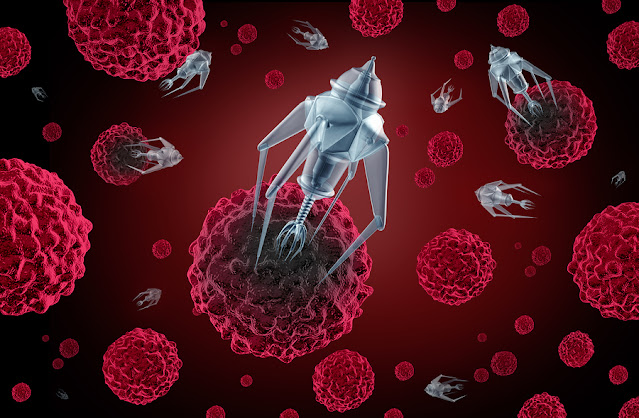Gas Turbine MRO: Key to Reliability in the Power Sector
The power sector has become increasingly reliant on
gas turbines to meet rising electricity demand. As gas turbines age, it is
vital that plant operators perform regular maintenance, repair, and overhaul
(MRO) activities to ensure reliable operation. Gas turbine MRO involves a host
of services aimed at extending asset life and maximizing availability. This
article discusses the importance of gas turbine MRO and highlights some of the
key services required to support reliability in the power sector.
Importance of Gas Turbine MRO
Gas turbines are capital-intensive assets that form the backbone of many power
systems. To extract maximum value from these investments, it is crucial to
implement comprehensive MRO programs. Neglecting maintenance can lead to
unexpected outages, low efficiency, and accelerated degradation - seriously
impacting plant performance and profitability. Regular MRO keeps critical
components functioning properly to avoid issues down the line. When done right,
MRO can increase turbine life by 10-20% compared to minimal maintenance
schedules. This translates to significant savings by deferring replacement
costs. Beyond financial considerations, reliable MRO ensures power facilities
can meet demanding availability targets required to support grid stability and
energy security.
Major MRO Activities
Key gas turbine MRO activities include: inspection, repairs, component
overhauls, hot section inspections, performance upgrades, and general
refurbishment. Major sub-assemblies like compressors, combustion chambers, and
turbines require periodic rehabilitation to replace worn parts and restore
design tolerances. Advanced on-site and workshop services aim to return assets
to like-new condition. Critical hot gas path inspections utilize sophisticated
techniques like borescope examinations to detect degradation in hard-to-access
regions. Comprehensive data analysis helps pinpoint emerging issues for
proactive remedies. Performance upgrades focus on maintaining high efficiency
over the long-term through retrofits and improvements. Auxiliary systems
servicing encompasses fuel, air, oil, and electrical aspects to maintain an
integrated operational state. Regular MRO executes these and other essential
measures that collectively maximize runtime before inducting into extended
outages.
Inspection and Diagnostics
Thorough inspections are cornerstone activities of any gas turbine MRO program.
Cutting-edge on-line and off-line diagnostic techniques identify component
deterioration and performance deviations. Early problem detection facilitates
minor spot repairs versus major refurbishment down the road. Gas path
inspectors examine combustors and hot gas path hardware for cracks, corrosion,
erosion or other anomalies indicating repairs are due. Thermography, vibration
monitoring, combustion analytics and oil testing complement visual inspections.
Digital inspection data feeds simulator programs that model turbine behavior
over time. Predictive maintenance softwareschedules inspection/service
intervals optimally. Remote diagnostic capabilities also provide
round-the-clock performance oversight. Overall, insightful inspections maintain
operability and safety.
Component Repairs and Overhauls
Many MRO routines focus on restoring degraded turbine sections and modules to
specifications. Compressor blade repair saves on costly replacements.
Reconditioned or new blades restore aerodynamic efficiency. Combustion
equipment undergoes intensive cleaning followed by detailed flow path
assessments. Any cracks or damage receive expert welding repairs. Similarly,
turbine nozzles and shrouds undergo precision repairs to remedy faults and
extend usable life. Critical hot gas path parts receive specialized coatings to
reinforce surfaces against heat and oxidation. Stage 1 and 2 buckets, nozzles,
shrouds etc. periodically enter full refurbishment cycles. Strategic component
repairs and overhauls keep aging gas turbines performing as intended over
decades of service.
Auxiliary Systems Support
Rounding out gas turbine MRO programs, auxiliary systems also garner dedicated
services. Fuel, air, oil and electricity subsystems affect plant outputs
directly. MRO activities diagnose issues, perform preventative maintenance,
replace filters and consumables, and overhaul key equipment as needed. Fuel nozzles,
regulators and pumps undergo testing and cleaning. Instrument air subsystems
receive leak checks and maintenance to verify quality and volumes. Generator,
starting and other critical electrical systems undergo assessments,
preventative replacement of old components and installation of
protection/monitoring upgrades appropriate for the application. Oil filtration
improvements, sampling, and reservoir overhauls maintain consistent supply
quality. Reliable support systems optimize gas turbine effectiveness.
With many regions still adding gas-fired capacity, turbine MRO expertise
remains vital for maintaining power system reliability cost-effectively.
Comprehensive programs marry periodic inspections, precision repairs, system
overhauls, diagnostics and performance improvements for maximum availability.
Original equipment and independent service providers utilize the latest
techniques and refurbishment sciences. Ensuring assets sustain rated outputs
long-term also aids the energy transition by deferring capital upgrades. As
fleets age globally, gas turbine MRO will remain a cornerstone activity for
operations, sustaining infrastructure capacity, and delivering low-cost
electricity reliably. Strategic MRO keeps critical power generation assets
running smoothly.
For more Insights, Read –
https://www.newsstatix.com/gas-turbine-mro-size-share-analysis-growth/




Comments
Post a Comment